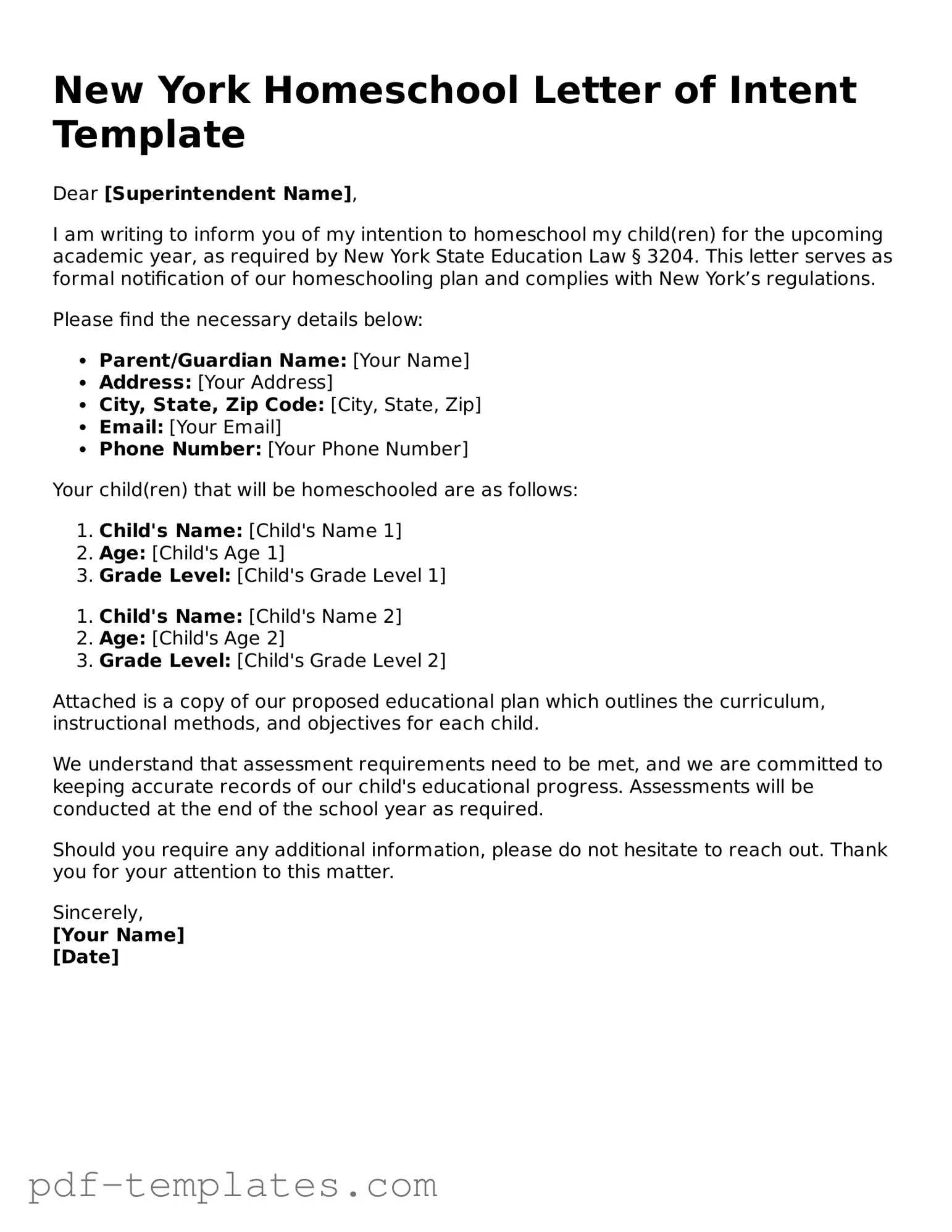The New York Homeschool Letter of Intent form is similar to the IEP, or Individualized Education Program. An IEP is a document that outlines specific educational goals and the services that will be provided to a student with disabilities. Like the Homeschool Letter of Intent, it requires parents to communicate their educational plans and the resources they will utilize. Both documents serve to ensure that a child receives the appropriate education tailored to their needs, whether in a traditional school setting or at home.
The USCIS I-864 form is a vital component in the realm of immigration documentation, akin to the importance of the New York Homeschool Letter of Intent in the educational domain. It solidifies the sponsor's promise of financial support, much like how parents are committed to their child's educational journey. To better understand the specifics of this form, you can refer to documentonline.org/blank-uscis-i-864, which provides further insights into its use and significance in family-based immigration processes.
Another document that shares similarities is the 504 Plan. This plan is designed for students who need accommodations due to disabilities but do not require special education services. Parents must provide information about their child’s needs and the accommodations that will be made. Much like the Homeschool Letter of Intent, it emphasizes the parent’s role in shaping their child’s educational experience and ensuring that the child’s unique requirements are met.
The Curriculum Plan is also comparable to the Homeschool Letter of Intent. This document outlines the subjects and educational materials that will be used during the homeschooling year. It requires parents to detail their teaching strategies and objectives. Similar to the Letter of Intent, the Curriculum Plan demonstrates a commitment to providing a structured educational environment, ensuring that learning goals are clearly defined and achievable.
The Enrollment Form for private schools shares characteristics with the Homeschool Letter of Intent. This form is used by parents to formally enroll their child in a private institution. It requires parents to provide essential information about their child and the educational approach they will be taking. Both documents serve as a means of communication between parents and educational authorities, ensuring that the child’s educational journey is recognized and supported.
The Education Plan for charter schools is another document that resembles the Homeschool Letter of Intent. Charter schools require parents to submit a plan that outlines their child’s educational goals and the methods to achieve them. This document, like the Letter of Intent, reflects the parents’ commitment to their child’s education and ensures that the school has a clear understanding of the student’s needs and the educational framework that will be implemented.
Lastly, the Student Learning Plan is akin to the Homeschool Letter of Intent. This plan is often used in various educational settings to outline a student’s learning objectives and the strategies to meet them. Parents must articulate their educational philosophy and the resources they will use. Both documents prioritize the child’s educational needs and encourage parental involvement in the learning process, fostering a supportive environment for the student’s growth.
